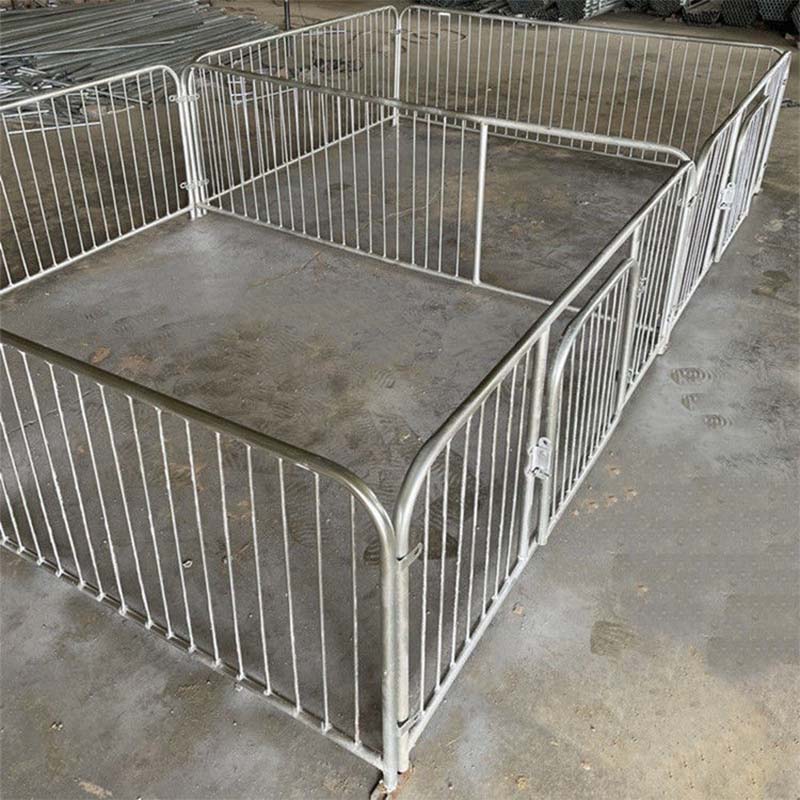Innovative Solutions for Efficient Poultry Breeding in Modern Caging Systems
Nov . 01, 2024 12:59 Back to list
Innovative Solutions for Efficient Poultry Breeding in Modern Caging Systems
Poultry Breeding Cages An Essential Component of Modern Agriculture
Poultry breeding cages have become an essential element in the advancement of poultry farming. As the demand for chicken, eggs, and other poultry products continues to rise globally, farmers are turning to innovative methods to optimize production efficiency and animal welfare. These cages provide a controlled environment that facilitates breeding, increases productivity, and enhances the overall health of the birds.
One of the primary advantages of using poultry breeding cages is the ability to manage the living conditions of the birds. Unlike traditional free-range farming, which can expose chickens to various diseases and parasites, cages offer a more hygienic and controlled environment. Modern cages are designed to minimize stress on the animals by providing adequate space, ventilation, and access to food and water. This leads to healthier birds and, consequently, a more productive breeding cycle.
Moreover, poultry breeding cages allow for more efficient management of breeding programs. Breeders can easily monitor and select the best-performing birds based on their health, growth rate, and egg production attributes. This controlled breeding process ensures that desirable traits are passed on to the next generation, which ultimately enhances the quality of the livestock. By utilizing selective breeding techniques within a cage system, farmers can produce a flock that is not only more resilient but also better suited to meet market demands.
poultry breeding cages

In addition to improving animal welfare and productivity, poultry breeding cages also contribute to the sustainability of poultry farming. With rising concerns regarding food security and environmental impact, adopting cage systems can lead to more responsible resource management. Cages can be designed to efficiently use space, allowing farmers to produce a larger quantity of poultry in a smaller footprint, thereby conserving land and reducing feed and water usage. This can help alleviate some of the pressures associated with traditional poultry farming methods, which often require larger areas for free-range systems.
Furthermore, advancements in cage technology have led to the development of automatic systems that streamline various aspects of poultry farming. Automated feeding, watering, and egg collection systems integrated into poultry breeding cages enhance operational efficiency. These innovations not only reduce labor costs but also ensure that the birds receive consistent care, which is crucial for their health and productivity.
However, it is essential to address concerns about the welfare of birds in these systems. Critics argue that confined spaces can lead to behavioral issues and reduced animal welfare. Therefore, modern poultry breeding cages have incorporated designs that prioritize the well-being of the birds. Features such as enriched cages, which provide environmental enrichment, are becoming increasingly popular. These cages allow chickens to exhibit natural behaviors, which is vital for their mental and physical health.
In conclusion, poultry breeding cages represent a significant development in the agricultural sector. They offer a balance between productivity and animal welfare, enabling farmers to meet the growing demand for poultry products sustainably. As technology continues to evolve, it is imperative for farmers to adopt ethical practices and strive for innovations that enhance both production efficiency and the quality of life for the birds. Ultimately, the future of poultry farming hinges on the responsible integration of breeding cages into modern agricultural practices.
-
Hot Sale 24 & 18 Door Rabbit Cages - Premium Breeding Solutions
NewsJul.25,2025
-
Automatic Feeding Line System Pan Feeder Nipple Drinker - Anping County Yize Metal Products Co., Ltd.
NewsJul.21,2025
-
Automatic Feeding Line System Pan Feeder Nipple Drinker - Anping County Yize Metal Products Co., Ltd.
NewsJul.21,2025
-
Automatic Feeding Line System - Anping Yize | Precision & Nipple
NewsJul.21,2025
-
Automatic Feeding Line System - Anping Yize | Precision & Nipple
NewsJul.21,2025
-
Automatic Feeding Line System-Anping County Yize Metal Products Co., Ltd.|Efficient Feed Distribution&Customized Animal Farming Solutions
NewsJul.21,2025






